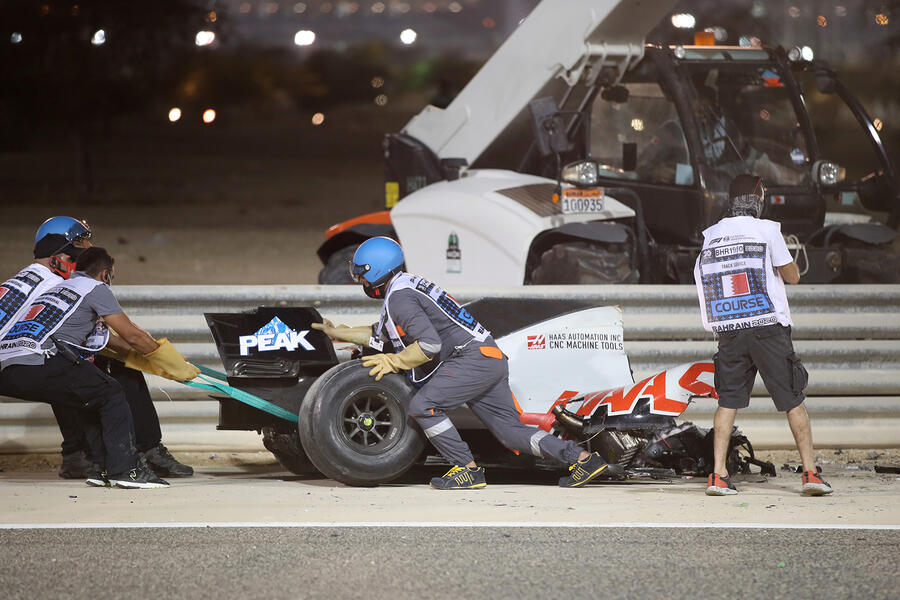Any arguments about Formula 1’s Halo device were firmly put to bed following Romain Grosjean’s fiery accident at the 2020 Bahrain Grand Prix.
Launched in the 2018, the Halo cockpit protection device initially proved controversial, with many active and past drivers speaking out against it. After Bahrain, when Grosjean’s Haas car ploughed straight through the safety barrier, splitting both it and his car in two, commentators and drivers alike are now united in their praise for the safety device. There is little doubt that we would be waking up to very different headlines today if it hadn’t been there.
Grosjean managed to extract himself from the car and was airlifted to the local Bahrain Defence Force hospital. Aside from some second-degree burns to his hands, he was otherwise unharmed. Along with the Halo, advances in medical procedures and safety equipment since the tragic events at Imola in 1994 all combined to ensure Grosjean was able to jump free of his car.

When it was launched in 2018, Autocar spoke to the people involved in creating the Halo device. The rigorous tests it went through, and the engineering behind it, are just some of the examples of the great work done by the FIA’s safety team:
To pass its structural test, the 7kg titanium Halo device has to withstand 125kN of force (equivalent to 12 tonnes in weight) from above for 5sec. Why so strong? So that it can stop a 20kg Formula 1 wheel, travelling at 140mph, from hitting a driver. Preventing such incidents has been a target of the FIA, motorsport’s governing body, since 2009, when Henry Surtees was killed in a Formula 2 race after being hit by a wheel and F1 star Felipe Massa was seriously injured after a suspension spring struck his helmet.
“We explored a number of different options,” says research engineer Andy Mellor, a consultant to the Global Institute for Motor Sport Safety, the FIA’s safety partner. “The challenge is that the position you need to put such a protective device in is also a position where the driver needs to see. So either you go for a transparent solution, which you can see through and does a structural job, or you go for a structural, non-transparent solution – but which can’t interfere with the driver’s ability to see.”
Various solutions, including transparent screens called the Aeroscreen and Shield, have been tested on crash rigs and on track during grand prix practice sessions. But there were ongoing visibility issues and other concerns about such devices, and other benefits of the Halo meant it became the clear choice. Crucially, recreations of various incidents, such as Fernando Alonso’s roll in the 2016 Australian Grand Prix, failed to find any situations in which the Halo significantly reduced safety.

Join the debate
Add your comment